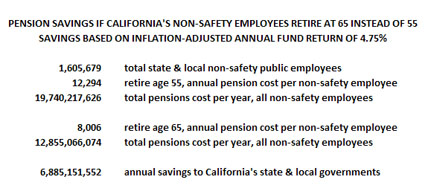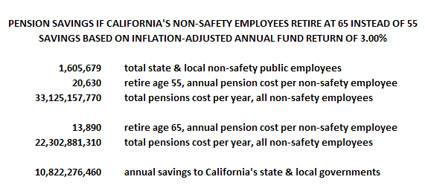The Real Reason for College Tuition Increases
The past year has seen a wave of protests by California’s public university students against tuition increases. These students have often been encouraged by their professors. But maybe the people encouraging them are the people they should be protesting against. Tuition increases are necessary because of increasing expenses, and the single most significant source of expenses in California’s university system are the personnel costs. So how much does a professor make? Could the solution to California’s higher-education budget crisis be not to raise tuition, but instead to lower rates of compensation?
It isn’t hard to get an idea what taxpayers and students end up paying our college personnel. One can refer to the Sacramento Bee’s “Search for State Worker Salaries” link, where you can enter the first and last name of a full time state university system employee and it will display their salary for the most recent year. For this analysis, I went to a department website and got the name of an associate professor with one of the social sciences at U.C. Davis, and learned that this individual earned a salary of $89,467 last year. According to the department website, this associate professor earns $89K per year in return for teaching (this spring quarter) one class, that meets for two hours on one afternoon per week. The professor is also obligated to be available to his students for office hours for one hour per week, immediately after class.
Clearly there is more to this professor’s job than showing up to school for three hours per week. In order to earn $89K per year this person has to prepare lesson plans, grade papers and exams, and presumably engage in research. And spring quarter may be a light quarter, and usually this professor may have two classes, or even three classes, requiring a presence on campus for 15 or even 20 hours per week. But before considering whether or not a typical social sciences professor in California’s university system actually works full time, let’s calculate how much their benefits are worth. Because total compensation has to include all costs, including current benefits and current funding obligations for future retirement benefits.
There is a Total Compensation Calculator provided by the UC Davis Dept. of Human Resources that can get us started. Assuming this individual is single and has no dependents, and elects to receive PPO Health and Dental Insurance coverage, and also taking into account the annual funding being set aside by the university for their retirement pension, their actual compensation per year is not $89,467, but actually $111,260. And it doesn’t end there.
As discussed in earlier posts, specifically in Sustainable Pension Fund Returns, but also explored in California’s Personnel Costs, Maintaining Pension Solvency, and elsewhere, it is not likely that the pension funding obligation disclosed in the “Total Compensation Calculator,” in the case of our social sciences professor, $15,755 per year, is going to be adequate. This is because the pension funds currently assume they can earn a real rate of return of 4.75% per year – that’s the return on the total fund investments after inflation – when in reality a sustainable return over the next few decades is unlikely to exceed 3.0% per year. Our social sciences professor, like most all non-safety personnel in the UC System, will get a retirement pension according to the following formula: # years worked x 2.5% x final year salary (ref. University of California Retirement Plan). It is reasonable to assume they will work 30 years, live for 30 years in retirement, and collect 30 x 2.5% = 75% of their final salary as a retirement pension for 30 years, or $67,100 per year (with cost of living adjustments) for the rest of their life. This is, by the way, about triple what someone can expect after working 40 years and then collecting social security, but more to the point, will a contribution of $15K per year for 30 years yield a sufficient amount of money to fund a pension of $67K per year for 30 years? One must fight the temptation to let the mind wander, because the next few facts are key to understanding one of the biggest financial tsunamis the world has ever seen, and it is just offshore.
At a CalPERS official projected rate of pension fund returns (after inflation) of 4.75%, a 75% pension for 30 years, funded by 30 years of contributions, would require an annual contribution of 25% of salary, or $22,367 per year.
At a more realistic projected rate of pension fund returns (after inflation) of 3.00%, a 75% pension for 30 years, funded by 30 years of contributions, would require an annual contribution of 41% of salary, or $36,681 per year. Care to wager as to which figure is safer to use? Remember you’re wagering on the future of your children and your nation.
By this reasoning, our social studies professor doesn’t make “total compensation” of $111,260 per year, but $132,186 per year. But we’re not through. Returning to our handy “Total Compensation Calculator,” provided by UC Davis, the following footnote is instructive: “The value of UC’s generous sick leave and vacation time is not included in this calculation.” So how generous is this benefit, and how does that compare to the sick leave and vacation times typically afforded in the private sector?
If you refer to the UC Davis “Accrual of Vacation” page, you will see an employee, on average during their career, will enjoy four weeks vacation per year – 20 working days. Similarly, on the page referencing holidays, you will see they enjoy 13 holidays per year. These are conservative numbers, of course. In reality our social studies professor gets the Christmas break, a few weeks, the Spring break, a few more weeks, and the whole summer off, a few more months – and we haven’t calculated the value of their sick time policy, as the UC Davis HR Dept. helpfully suggests we consider. But even if you simply compare the 33 paid days off, as though school was in session 52 weeks a year, you are still seeing our professor enjoy at least 50% more days off than the average private sector worker. Pick a number – let’s tack on the value of 16 days off by taking a daily rate of $89K / 2,000 x 8 = $356 and add another $5,696 to our total compensation, to get ourselves to a grand total of $137,882.
This sort of pay is not on the high side, it’s actually fairly typical for employees of California’s higher education system. Take a look at all of the pay scales, again courtesy of UC Davis’s HR Dept.: Professional & Support Staff Salary Grades, and Managers & Senior Professionals Salary Grades. You will see the lowest paid full-time position in the system is $25,668 per year. But at the lower end of the salary scale benefits actually represent a greater percentage of total compensation. If we apply our calculations used above to this lowest salary, we will see this position actually pays, including all benefits, at least $39,765 per year. This is the lowest rate of total compensation you will find. The maximum rate of pay for a UC Position, before benefits, is $282,372.
Comparisons to the private sector boggle the mind. The lowest rate of pay in the entire massive California system of higher education is more than the average income for a private sector worker in this state. Most of these workers enjoy a rate of total compensation that is only found in the highest echelons of private business. Most of them, when you include the value of their benefits, are collecting six-figure rates of compensation.
When students, abetted by their professors who apparently have ample free time, protest against rising tuition, they are failing to identify the true culprits. Because the reason our university system is going broke is because our teachers in higher education have become the most extravagantly compensated, pampered class of workers in the history of the world – and taxpayers, along with students, are forced to pay for this. And this disparity between our taxpayer-funded academic class and the rest of us is not unique. The same disparity exists in all government positions today in California. Nearly all of them are grossly overpaid.
The solution to government deficits is not to raise taxes or tuition. It is to bring rates of compensation for faculty and staff at our state funded colleges and universities down to reasonable and sustainable levels, and apply that solution across the board in all of our state and local governments. The next time a student suggests their tuition is too high because taxes are too low, ask them if they think it is fair to pay someone $138,882 per year to work one afternoon per week, and take summers off.

Edward Ring is a contributing editor and senior fellow with the California Policy Center, which he co-founded in 2013 and served as its first president. He is also a senior fellow with the Center for American Greatness, and a regular contributor to the California Globe. His work has appeared in the Los Angeles Times, the Wall Street Journal, the Economist, Forbes, and other media outlets.
To help support more content and policy analysis like this, please click here.


